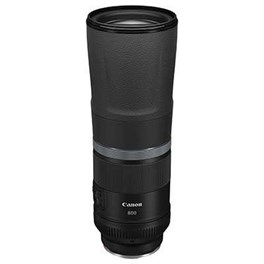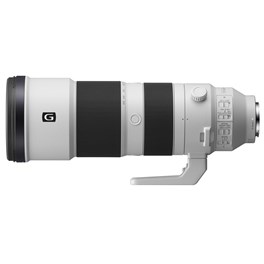
We’re taking you through what we consider to be the best lenses for wildlife. These are truly exceptional telephoto zooms and primes that deliver quality a cut above the average, without completely breaking the bank. These lenses have been selected by our in-house team of photographers, writers and imaging experts, who have worked collaboratively to make sure we’re including the best wildlife photography lenses for the majority of users.
We’ve not included ultra-professional telephoto prime lenses at the top of many manufacturers’ ranges, like the Canon RF 600mm f4 L IS USM or the Nikon Z 400mm f2.8 TC VR S. These lenses are definitely the best of the best — but they’re geared towards professionals, and are out of reach for most people. We’re going to assume that if you’re in the market for a £10,000-20,000 lens, you already have a good idea of what you’re looking for!
So here, we’ve included more broadly affordable lenses that are going to be realistic propositions for amateur and enthusiast wildlife photographers. The lenses are for a mixture of different mounts and systems, but all are absolute standout optics that do something special to help wildlife photographers raise their game.
For more wildlife kit ideas, check out professional wildlife photographer Tom Mason’s ultimate kit bag on our blog.
Best Lenses for Wildlife
|
Aperture: f11 fixed Focal Length: 800mm Weight: 1,260g Image Stabilisation: Yes (up to 4 stops) Minimum Focus Distance: 6m |
Pros:
Cons:
|
It’s great to see that Canon hasn’t lost its spirit of innovation. Many photographers were surprised when it released a pair of telephoto primes for RF-mount with fixed f11 apertures that can’t be changed – surely that would be too restrictive? But once you dig into the Canon RF 800mm f11 IS STM Lens, the concept starts to make sense.
As well as the fact that the RF 800mm f11 IS STM is much more affordable than any other 800mm prime lens, you have to consider how much smaller and lighter it is. It weighs 1,260g – for comparison, the RF 800mm f5.6 L IS USM weighs 3kg, and costs £19,099. That is plainly not an option for most photographers, so the RF 800mm f11 IS STM is a great step in making super-telephoto wildlife photography accessible to more people.
Its images look fabulous too, making the most of those high-resolution EOS R sensors. The compromises it makes may be too much for some people, but if you want 800mm quality on a budget, this is how you get it.
|
Aperture: f5.6–6.3 variable Focal Length: 200-600mm Weight: 2,115g Image Stabilisation: Yes (Optical SteadyShot) Minimum Focus Distance: 2.4m |
Pros:
Cons:
|
Tack-sharp and with telephoto reach for days, the Sony FE 200-600mm f5.6-6.3 G OSS Lens is a pretty tough act to beat when it comes to wildlife photography. Even with that generous zoom range, the zoom mechanism is all internal, meaning the lens doesn’t change shape or length when zooming. The Direct Drive SSM autofocus system is super-fast and reliable, and the lens also has an 11-blade aperture, which means you can open it up to its wider aperture settings to create images with a beautiful blurred background and bokeh.
This is one of the lenses that are compatible with Sony’s 1.4x and 2.0x teleconverters, meaning you can boost that focal range to extreme levels if you don’t mind a corresponding light loss of one or two stops. Focusing is quiet and accurate to a pin-point, while the focus range limiter also allows you to restrict it to a specific distance range, reducing the chances of accidentally focusing on the wrong subject.
|
Aperture: f5–6.3 variable Focal Length: 100-400mm Weight: 1,135g Image Stabilisation: Yes (Optical Stabiliser) Minimum Focus Distance: 1.12m |
Pros:
Cons:
|
Mounts: Sony E, L-mount, Fujifilm X
The Sigma 100-400mm f5-6.3 Contemporary DG DN OS Lens is a superb wildlife lens for different mirrorless systems. If you use the L-mount version, you can take advantage of the TC-2011 2x and TC-1411 1.4x teleconverters, as well as the USB dock.
Whether you use the full-frame Sony or L-mount versions or the Fujifilm X version (which provides an equivalent focal range of 150-600mm), sharpness is excellent throughout the zoom and aperture ranges, and autofocus is fast and silent thanks to the Hypersonic Motor (HSM) mechanism. We also appreciate that the zoom can be operated via the push/pull method if the user prefers – while this requires a bit of oomph at the top end, it’s great for making quick transitions between focal lengths.
|
Aperture: f4 maximum Focal Length: 300mm Weight: 755g Image Stabilisation: Yes (Vibration Reduction, up to 4.5 stops) Minimum Focus Distance: 1.4m |
Pros:
Cons:
|
A prime lens for wildlife photography is naturally somewhat more restrictive — you can’t simply reframe on your subject with the twist of a zoom ring. However, there’s a lot to be said for the advantages of a prime, not just in terms of quality, but in the way a lens with a fixed focal length makes you think more carefully about your positioning and your framing.
A 300mm F4 lens is the go-to recommendation of our wildlife photography specialist Tom Mason, and the Nikon 300mm f4E PF ED VR AF-S is a brilliant example. It’s designed for Nikon’s F-mount DSLRs, but can easily be adapted to the mirrorless Z system via the FTZ adapter. With premium optics, including a powerful Phase Fresnel (PF) lens element, the lens delivers pin-sharp quality without weighing you down too much — at 755g, it’s pretty light for a powerful telephoto.
OM SYSTEM M.Zuiko Digital ED 100-400mm f5-6.3 IS II Lens
Designed to capture distant subjects in any environment, the OM SYSTEM M.Zuiko Digital ED 100-400mm f5-6.3 IS II lens provides a 200-800mm equivalent focal length for Micro Four Thirds cameras. It features advanced optics with HR and ED elements for sharp, vibrant images, ZERO coating to reduce flare, upgraded 7-stop Sync IS, quiet VCM autofocus, weather sealing, and a removable tripod collar.
£1,079.00 inc. Cashback View
|
Aperture: f5–6.3 variable Focal Length: 100-400mm (200-800mm equivalent) Weight: 1,120g Image Stabilisation: Yes (up to 3 stops) Minimum Focus Distance: 1.3m |
Pros:
Cons:
|
Fully weatherproofed and designed to pair with hardy cameras like the OM System OM-1 II, this powerful telephoto zoom lens gives you huge flexibility when it comes to wildlife photography. The 2x crop factor of Micro Four Thirds lends itself quite naturally to wildlife shooting, allowing you to effectively extend the native 100-400mm focal range of this lens to a whopping equivalent 200-800mm. It’s not just for distance however — the minimum focal distance is an impressive 1.3m, meaning you’re also covered for close-up shots.
While the relatively narrow variable aperture means you may have to punch up the ISO from time to time, particularly if you are frequently working at the outer edge of the zoom, the speed, versatility and image quality offered by the OM SYSTEM M.Zuiko Digital ED 100-400mm f5-6.3 IS II means it should merit consideration from any wildlife photographer who’s working in the Micro Four Thirds system.
|
Aperture: f5–6.3 variable Focal Length: 150-600mm Weight: 1,930g Image Stabilisation: Yes (Optical Stabiliser with two modes) Minimum Focus Distance: 2.8m |
Pros:
Cons:
|
Mounts: Canon EF, Nikon F, Sigma SA
An older lens that still offers top-notch value for money, the Sigma 150-600mm f5-6.3 Contemporary DG OS HSM is a brilliant option for anyone who’s photographing wildlife on Canon or Nikon DSLRs — which we know is still quite a few of you. With a broad, flexible focal range, the Sigma lens incorporates specialised glass elements to ensure top-tier image quality at every focal length, and its body is hardy and weatherproofed for those long shooting days outdoors.
A feature we also particularly like is the full-time manual focus override, which is especially useful on older DSLRs that don’t have fancy modern conveniences like intelligent subject-recognition autofocus. If the AF system is getting confused and keeps focusing on the background rather than your subject, you can correct it manually with a swift twist of the ring. In wildlife photography, where time is truly of the essence, that is a hugely welcome feature.

How to choose the best lens for wildlife
If you’re wondering how we’ve chosen our lenses, here are the key criteria to keep in mind when selecting a good wildlife lens.
- Focal length: When it comes to wildlife, you may think the longer the focal length the better, as a long lens allows you to get close to a subject. This is true to an extent, but not all wildlife subjects are alike – urban animals like foxes and seagulls will let you get much closer than rural ones like deer or badgers, for instance. A longer lens will add weight to your kit bag, so it’s worth thinking about how much focal length you realistically need.
- Fast-focusing: Focusing is a game of two halves, with camera and lens both playing their role. A good wildlife lens needs a capable focusing mechanism that will lock onto subjects quickly and accurately.
- Zoom or prime? This is an age-old debate, so all we’ll say here is that both zooms and primes can be fantastic for wildlife photographers. Zooms give you the flexibility to tackle lots of different subjects in different situations, while primes give you unparalleled image quality and can often improve your discipline as a photographer by forcing you to think more carefully about positioning and framing. We’ve included both on this list.
FAQs
What are wildlife lenses and why are they important?
Wildlife lenses are specialised camera lenses that are specifically designed for photographing wildlife. They are important because they allow photographers to capture high-quality images of animals and other wildlife from a distance, without disturbing them.
What are the best wildlife lenses?
The best wildlife lenses are those that offer a long focal length, fast aperture, and image stabilisation.
How do I choose the right wildlife lens for my camera?
When choosing a wildlife lens, consider the type of camera you have (DSLR or mirrorless), the focal length range you need, the aperture range, and any additional features such as image stabilisation. You should also consider the weight and size of the lens, as well as the cost.
How can I take better wildlife photos with my lens?
Try to get as close to the animal as possible while still maintaining a safe distance and without disturbing them. Use a fast shutter speed to freeze any movement, and try to use natural light as much as possible.
How do we decide?
Our in-house photography experts, store staff and partners all work collaboratively to pour over our guides and tips articles. We also consider emerging trends and customer feedback to make sure our guides are always up-to-date and reflective of what people are truly looking for. By curating only the best products, our guides provide trustworthy recommendations, making it easier for customers to make informed choices with confidence.
If you would like more advice on any purchase our contact centre staff are here to help. Alternatively, you can reach us via email or social media. And don't forget. If you were to purchase anything based on our recommendations you'll be covered by our full returns policy
Sign up for our newsletter today!
- Subscribe for exclusive discounts and special offers
- Receive our monthly content roundups
- Get the latest news and know-how from our experts


















